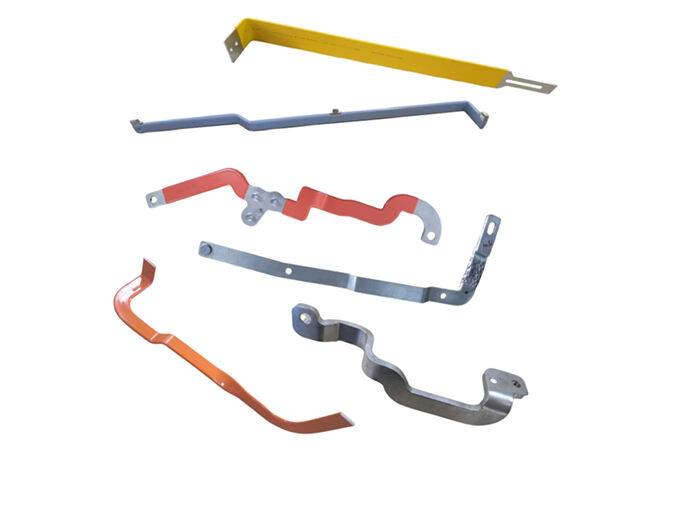Busbars are very significant, as they transport electric power from the generators to homes and businesses. These substations are located in hidden places, think of substations as power stations for electricity- they regulate electricity consumption behind the scenes. Now we know about the types of busbars by Kinto used in these substations.

Different Types of Busbars
There are multiple kinds of busbars which work in various functions for substations. Rigid busbars, cable busbars and compact bars - they are the most frequently encountered forms.
This busbar is a rigid piece of multiple metal bars together to thicken it. They are incredibly durable and tend to be used outdoors, in game which means they withstand harsh weather conditions.
Instead, a busbar cable comprises several cables bunched up together. They are thus flexible and easier to handle. Ideal for applications in cramped indoor substations.
They are referred to as compact busbars because they have smaller dimensions and consume less space. When space is limited in indoor substations, they can be utilized. The compact design of these fittings makes them suitable for use in confined spaces and they do not compromise on performance either.
Why Busbars are Important?
The primary functionality of busbars is in the functioning and operation of substations. They allow electricity generated by the generators to be sent safely and rapidly from one place in the electric grid to another. This allows for an unimpeded flow of electricity to people's homes and businesses. Substations are locations where electric power is changed from one form to another, which in this case would be stepping down high voltage electricity into a lower safer for delivery electronic energy. This electricity needs to stay in motion and not get lost nor catch fire from moving, busbars are used for that.
Choosing the Right Busbars
Correct Busbars are important since they determine the how well everything in your substation works together. There are different types of busbars available, and the type that will work best for you depends on various factors. Well first, it depends on how much energy you are intending to channel through them. Next, you must consider the substation configuration. Last but not least, you should consider the available mounting space. Consider the climate of where you live. Considering some busbars might be more maintenance-hungry than others, this aspect should also not be underestimated.
Copper vs. Aluminum Busbars
Materials: Copper and Aluminum are the two most popular busbar materials.
Copper is a good conductor of electricity, which means it allows electric current to pass through much better than most other metals. It is also durable, so it does not easily rust and can last a long time without breaking.
Aluminum meanwhile, is much lighter and almost always cheaper than copper. This can sometimes make aluminum an economically feasible alternative for certain substation configurations.
The price of course, the amount to be subjected, and how much they will experience. I am used in selecting between copper busbars or Aluminum Bus Bar ones based on whatever power you demand from your substation were a big factor by far is. Different materials all have their own advantages so it is helpful to know what you need.
Taking Care of Busbars
Maintain busbar and its upgradation are one of the key issues to be taken care by all energy management systems. If left alone for long enough, busbars can grow old and corrode or overheat resulting in issues. To prevent power failures and avoid safety risks you should have these inspected periodically. If something is not working you want to know immediately and fix it. Unfortunately, you may have to replace the busbars with a bigger more efficient one if your load is increased or just to upsize it in order for the substation as a whole.
In broad strokes, busbars are an essential component of the substation system and something that anyone working in electricity should know about. Your requirements must be very clear like the kind of busbar that will sit well with it. Your choices here will be mainly between copper bus bar and aluminum, along with cost as well environmental conditions versus power requirements. One of the key things that need to focus on keeping a check is busbars, it plays an important role in substation for electrical power transfer functionality.
 EN
EN
 AR
AR
 BG
BG
 HR
HR
 CS
CS
 DA
DA
 NL
NL
 FI
FI
 FR
FR
 DE
DE
 EL
EL
 HI
HI
 IT
IT
 JA
JA
 KO
KO
 NO
NO
 PL
PL
 PT
PT
 RO
RO
 RU
RU
 ES
ES
 SV
SV
 CA
CA
 TL
TL
 IW
IW
 ID
ID
 LV
LV
 LT
LT
 SR
SR
 SK
SK
 UK
UK
 VI
VI
 SQ
SQ
 HU
HU
 TH
TH
 TR
TR
 FA
FA
 MS
MS
 GA
GA
 LA
LA




